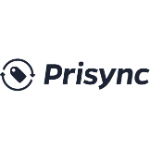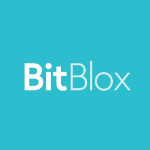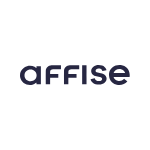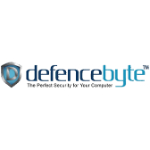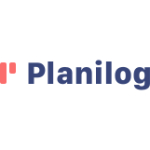List of Best Optimisation Software
Showing 10 of 25 productsIObit is a leading software company that specializes in developing innovative and user-friendly tools to optimize and secure your computer. With years of experience and a team of skilled developers, IObit has become a trusted name in the tech industr...Read IObit Reviews
Prisync is a solution for businesses looking to streamline their pricing strategy. With its innovative features interface, Prisync empowers companies to stay competitive in the market by providing real-time insights and data-driven pricing. Say goodb...Read Prisync Reviews
BitBlox is a software designed to revolutionize your business operations. With its advanced features and user-friendly interface, BitBlox is the perfect tool for streamlining tasks, increasing efficiency, and driving growth. Say goodbye to outdated s...Read BitBlox Reviews
Incompetitor is a software that helps businesses stay ahead in a competitive market. With its innovative features and user-friendly interface, Incompetitor provides businesses with valuable insights and strategies to outshine their rivals. Say goodby...Read Incompetitor Reviews
Beyond is a software that goes beyond the limitations of traditional tools. With its innovative features and user-friendly interface, Beyond helps businesses achieve their goals and stay ahead of the competition. Say goodbye to complicated processes...Read Beyond Reviews
Affise is a comprehensive affiliate marketing and mobile attribution platform created to efficiently manage, accurately attribute, and effectively scale performance marketing campaigns across web and mobile environments, helping businesses optimize t...Read Affise Reviews
Tercept is a software solution designed to revolutionize your data analytics and business intelligence processes. With its advanced features and user-friendly interface, Tercept is a tool to unlock valuable insights and drive growth for your business...Read Tercept Reviews
Defencebyte Computer Optimizer is a software designed to enhance the performance of your computer. Developed with advanced technology and user-friendly interface, this software is a must-have for every computer user. Say goodbye to slow and sluggish...Read Defencebyte Computer Optimizer Reviews
Planilog is an innovative software designed to simplify project management and maximize productivity. With its user-friendly interface features, Planilog streamlines tasks, tracks progress, and enhances collaboration. Say goodbye to complex project p...Read Planilog Reviews
anyLogistix is a supply chain optimization software designed to help businesses of all sizes streamline their distribution operations. With its advanced modeling capabilities interface, anyLogistix empowers companies to make smarter, data-driven deci...Read anyLogistix Reviews
- What Is Optimization Software?
- Top Reasons Why Businesses Need Optimization Software?
- What Are the Top Key Features of Optimization Software?
- What Are the Top Benefits of Optimization Software?
- What Are the Steps to Choose the Right Optimization Software?
- What Are the Types of Optimization Software for Different Industries?
- What Are the Technology Trends for Best Optimization Software?
- What Are the Deployment Options for Optimization Software?
What Is Optimization Software?
Optimization software is a software application that facilitates the identification, analysis, and modification of processes and activities with the aim of enhancing productivity. One potential benefit is the enhancement of operational efficiency and the mitigation of associated costs.
Optimisation software operates by conducting data analysis, discerning processes and activities that are inefficient or costly, and afterwards implementing modifications or alterations to mitigate inefficiency and cost. As an illustration, a commercial entity may possess empirical evidence indicating an excessive expenditure on a specific category of supplies.
The utilization of the best optimization tools has the capability to detect this particular concern and propose strategies for reducing expenses. Potential strategies for cost reduction may encompass engaging in price negotiations with vendors, implementing measures to minimize consumption of supplies, or exploring alternative approaches to achieve cost savings.
In general, optimization software serves as a valuable tool for enterprises. The utilization of this tool has the potential to enhance efficiency and financial savings for individuals by effectively recognizing issues and proposing strategies to mitigate expenses and enhance output.
Additionally, it can be utilized to ascertain any hazards or concerns that may result in project delays, exceeding budgetary limits, or other complications.
Top Reasons Why Businesses Need Optimization Software?
1. Optimization software streamlines intricate decision-making procedures and furnishes firms with accurate solutions to challenging inquiries.
2. The use of this strategy has the potential to effectively mitigate operating expenses and enhance financial gains.
3. The identification of the most cost-effective and efficient approaches to reach potential clients aids in the enhancement of marketing strategy.
4. The utilization of this tool can facilitate the identification of optimal problem-solving approaches and contribute to the formulation of enduring strategies and plans.
5. Optimization software facilitates the enhancement of resource utilization and productivity inside enterprises.
6. The utilization of automation facilitates the streamlining of operations and offers up-to-the-minute data to support informed decision-making.
7. The provision of personalized and bespoke solutions has the potential to enhance the customer experience for organizations.
8. This approach facilitates the identification of potential cost savings across different departments and the establishment of cost efficiencies.
9. The implementation of improved pricing models has the potential to enhance cost-reduction efforts.
10. Additionally, it has the potential to facilitate the enhancement of forecasting models, hence improving inventory management practices.
11. This capability has the potential to enhance understanding of consumer behavior, hence facilitating more effective customer segmentation and targeting strategies.
12. The utilization of this tool enables enterprises to swiftly adjust their operations in response to dynamic market conditions and evolving company landscapes.
13. The best optimization tools aid enterprises in the identification of novel business prospects and potential avenues for expansion.
14. The efficient management of assets can assist organizations in optimizing returns.
15. Optimization software has the capability to assist firms in monitoring their operational performance and identifying potential areas for improvement.
What Are the Top Key Features of Optimization Software?
The top key features of optimisation software are:
1. Automation: Automation enables optimization software to identify trends and optimize parameters by utilizing the inputs provided by the user.
2. Optimization Algorithms: Optimization algorithms facilitate the achievement of optimal outcomes by efficiently and effectively minimizing or maximizing a user-defined goal function.
3. Constraint Solving: The process of constraint solution involves the utilization of optimization algorithms to guarantee the satisfaction of user-specified constraints during the manipulation of parameters.
4. Data Analysis and Visualization: Optimization software possesses the capability to discern valuable insights from extensive datasets, and can further offer visual representations to effectively depict the optimized data.
5. Multi-objective Optimization: The utilization of multi-objective optimization enables users to concurrently optimize various sets of parameters, hence facilitating the generation of comprehensive and robust outcomes.
6. Scalability: In order to deliver accurate data and recommendations, it is imperative for optimization software to possess the capability to adapt to the scale of the problem at hand.
7. Communication: The expeditious and secure transfer of optimization outcomes to alternative software frameworks is of utmost importance.
What Are the Top Benefits of Optimization Software?
1. Increase efficiency: The utilization of optimization software has the potential to significantly enhance the efficiency of data processing. By doing activities with efficiency and precision, it minimizes the duration required for task completion.
2. Reduce costs: The best optimization software plays a crucial role in cost reduction related to data processing through the elimination of human labor and streamlining of the whole process.
3. Increase accuracy: Accurate data output plays a crucial role in facilitating data-driven decision making. Optimization software guarantees precision by delivering dependable output data.
4. Automation: Automation plays a crucial role in the reduction of costs and time associated with data processing. The best optimization tools offers a range of automated functionalities aimed at minimizing the need for repetitive human tasks.
5. Improve scalability: The best optimisation software facilitates the capacity to scale and tailor data processing processes in order to address individual demands and requirements.
6. Improve response time: Optimization software aids in the enhancement of network replies by mitigating latency and latency spikes.
7. Eliminate bottlenecks in processes: The implementation of the best optimization tools effectively mitigates the occurrence of lengthy queues inside the data processing pipeline, resulting in improved response times and a decrease in latency spikes.
8. Improve performance: Optimization software has the potential to enhance overall performance through the reduction of workloads and the optimization of resources.
What Are the Steps to Choose the Right Optimization Software?
1. Assess your optimization requirements: Initially, it is important to evaluate the magnitude and intricacy of the problem under consideration, with the aim of optimizing its resolution. It is imperative to ascertain the necessary features, including but not limited to flexibility, speed, convenience of use, affordability, and support.
2. Evaluate potential vendors: Subsequently, generate a concise inventory of prospective vendors offering optimization tools. It is essential to thoroughly evaluate the features, pricing, support, and customer evaluations of each vendor in order to ascertain whether the solution aligns with your requirements.
3. Understand the user interface: The interface of the best optimization tools can vary in complexity, depending on the nature of the problem at hand. For less experienced users, a visual interface may be provided, allowing for a more intuitive and user-friendly experience.
Conversely, for more skilled users, a more intricate scripting language may be used, enabling greater flexibility and control over the optimization process.
4. Run a trial or demo: It is advisable to arrange a complimentary trial or demonstration of the optimization software package before making a purchase, in order to ascertain and address any possible concerns or drawbacks associated with the software.
5. Determine total cost: Understanding the comprehensive cost associated with the procurement and integration of the best optimisation software is of paramount significance. This encompasses many expenses, including programming fees, maintenance fees, and additional services.
6. Purchase software and implement: After selecting the appropriate optimization software for your firm, the next step involves the procurement of the program and proceeding with its implementation.
During the implementation phase, it is imperative to ensure that the vendor is engaged to provide on-site technical support and assistance in configuring the most suitable solutions.
What Are the Types of Optimization Software for Different Industries?
A wide range of optimization software solutions are currently offered across diverse sectors.
In a broad sense, the aforementioned software solutions can be categorized into two primary classifications: deterministic and stochastic optimization.
1. Deterministic Optimisation Software: Deterministic optimisation software is employed for resolving problems that entail a singular solution, such as the planning of travel routes.
These tools have the capability to derive the most favorable solution based on a predetermined set of assumptions or when complete information about the problem is available.
2. Stochastic Optimisation Software: Stochastic optimization software demonstrates enhanced utility when used on intricate problem domains. This feature enables users to address challenges characterized by many viable solutions through the incorporation of uncertainty or unpredictability inside the system.
The best optimization tools have applications in several industries and domains, such as operations research, finance, logistics, and scheduling.
What Are the Technology Trends for Best Optimization Software?
The current advancements in technology for optimizing software utilization highlight an increasing need for enhanced performance in commercial software.
The emergence of future trends in artificial intelligence and deep learning applications has the potential to enhance the intuitiveness and self-learning capabilities of optimization software, hence enabling the generation of rapid and precise outcomes.
The possibility of automating optimization decisions exists through the utilization of enhanced natural language processing interfaces and data mining tools. The utilization of cloud computing can also be leveraged to capitalize on pooled resources and enhance performance among several users.
Furthermore, the extensive utilization of big data analytics software solutions can provide enhanced insights and feedback pertaining to the optimized data. The aforementioned developments indicate that there exists a possibility for the best optimization software to enhance performance and efficiency within a suitable corporate framework.
What Are the Deployment Options for Optimization Software?
The selection of deployment choices for the best optimisation software is contingent upon the particular product, but in a broad sense, it encompasses cloud-based deployment, on-site deployment, and hybrid deployment.
1. Cloud-based deployment refers to the utilization of cloud provider services for the purpose of delivering optimization solutions.
This strategy is widely embraced by Software as a Service (SaaS) providers, since it offers several advantages such as the absence of initial expenses, cost reductions associated with hardware and maintenance, and the flexibility to easily scale operations.
2. On-site deployment refers to the contrasting technique wherein optimization software is installed and implemented within the physical premises of the organization.
This technique often necessitates a company's investment in dedicated hardware and data storage infrastructure, perhaps resulting in enhanced processing speeds due to the software's independence from external resources.
3. A hybrid strategy refers to the utilization of both cloud-based and on-site resources in conjunction.
As an illustration, an entity may elect to utilize the cloud services offered by a Software-as-a-Service (SaaS) provider to meet their optimization requirements, while concurrently retaining on-premises hardware and storage infrastructure to achieve enhanced processing speeds.

